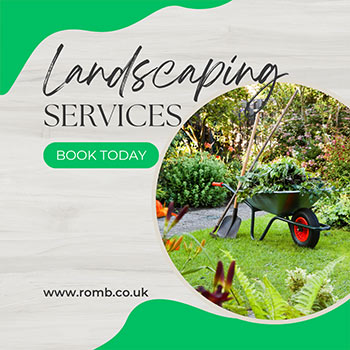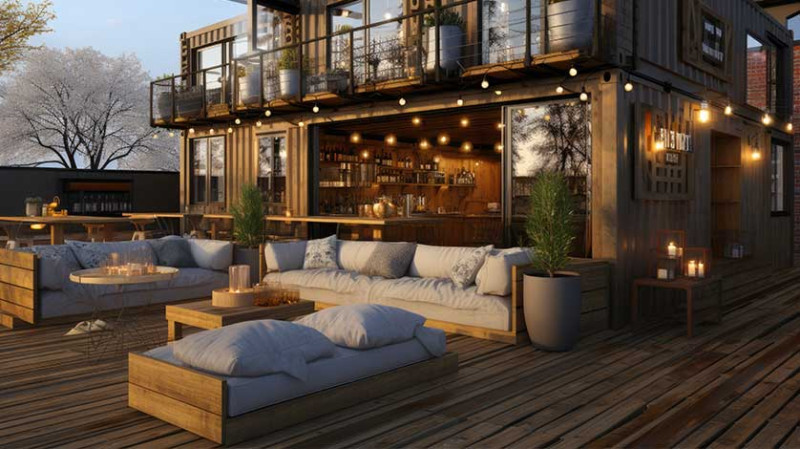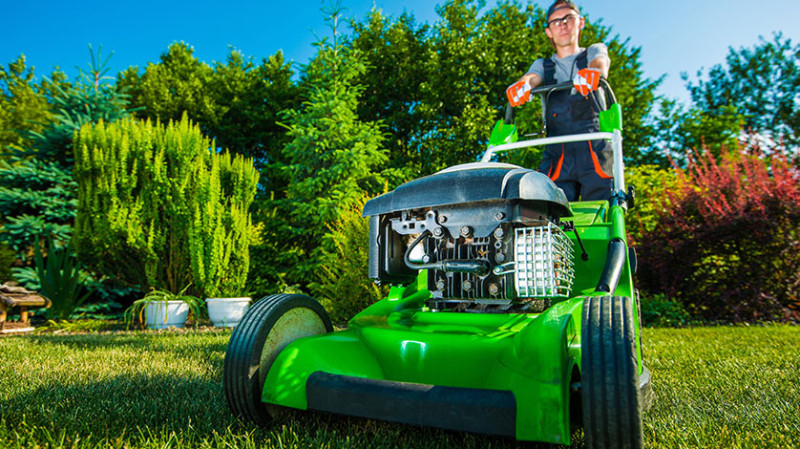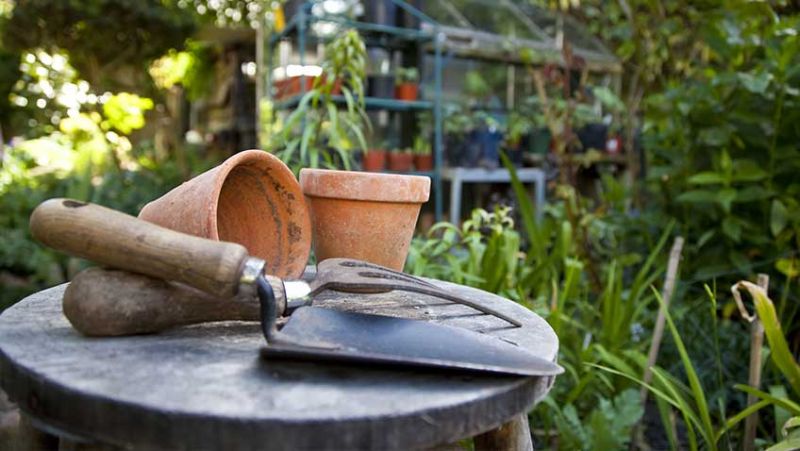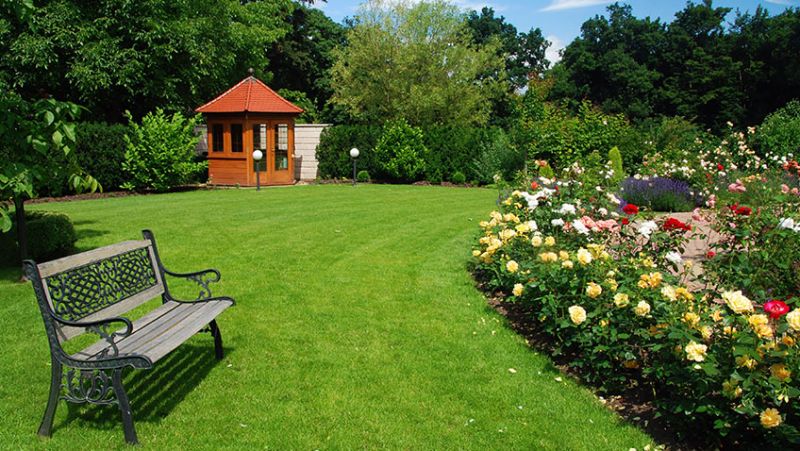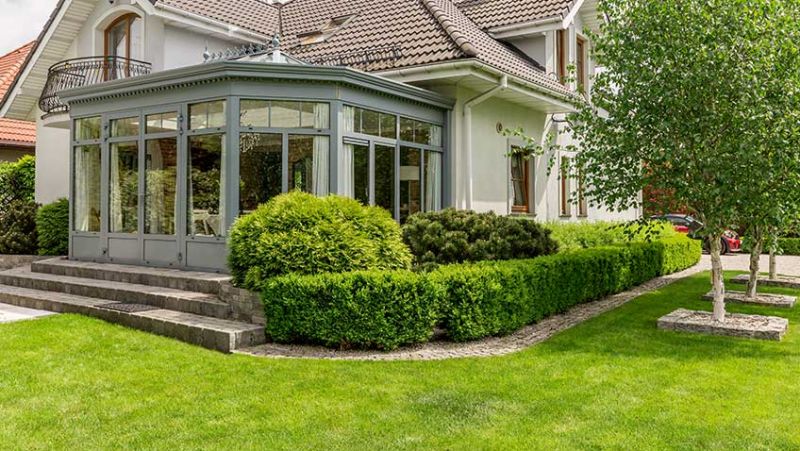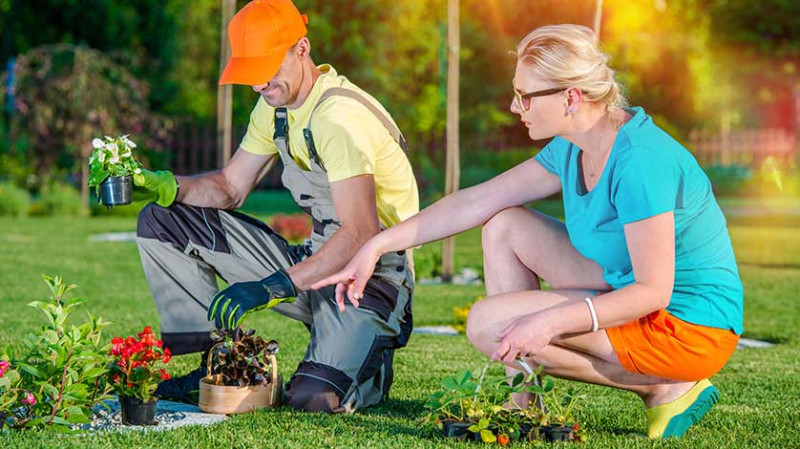
Whether you're sprucing up a small back garden in Birmingham or giving your London terrace a fresh new look, landscaping doesn't have to break the bank. With a little creativity and elbow grease, you can transform your outdoor space into a stunning retreat that adds value, aesthetic appeal, and functionality, without spending thousands of pounds. As interest in outdoor living grows, especially among DIYers, young homeowners, designers, and even pro tradespeople, easy and budget-friendly landscaping solutions have become all the rage.
Below you'll find 5 simple yet impactful landscaping tips and ideas to upgrade your garden, yard, or patio on a budget. And stick around, we've included some bonus pro tips for even more inspiration!
1. Define and Edge Your Garden Beds
One of the easiest ways to elevate your garden's appearance is with clearly defined garden bed edges. Clean lines around flower beds, walkways, or tree bases add a polished, professional look even without extensive planting or hard landscaping work. Better yet, it doesn't require high-end materials or professional installation.
You can edge your garden with simple, inexpensive materials like reclaimed bricks, timber offcuts, decorative stones, or even repurposed metal. A spade or half-moon edging tool will help you cut a clean boundary before placing your materials in a stable trench.
For a cleaner look, consider plastic or metal edging kits sold at hardware stores like B&Q, Wickes, or Screwfix, which snap into place along your bed. These are incredibly durable and weatherproof for the British climate.
Well-defined beds help contain mulch, prevent grass intrusion, and dramatically neaten the visual structure of your space, making it feel like the whole garden got a makeover.
2. Use Gravel for Instant Pathways and Seating Areas
Gravel is one of the UK's most budget-friendly landscaping materials with maximum design impact. Available in a variety of colours, textures, and sizes, gravel can instantly upgrade patios, pathways, and even areas beneath garden furniture or fire pits.
Installing a gravel path or feature area requires minimal tools. Just mark out the shape with garden hose or string, remove grass and weeds, lay down a weed-control membrane, and pour your gravel on top. Compact with a tamper and you're good to go.
Choose finer Cotswold stone aggregates for a cottage garden look, or dark slate chippings for a modern, clean-lined design. Best of all, gravel improves drainage, essential in many rainy parts of the UK, and it's reasonably priced compared to concrete or paving slabs.
Pair gravel with solar lights or stepping stones to amplify the effect for both function and form, transforming forgotten corners into inviting spaces.
3. Incorporate Raised Planters or Pallet Garden Beds
Build or install raised planters to bring structure to your garden while saving your back from unnecessary bending. Raised beds offer better control over soil quality and drainage, a major plus for urban gardeners dealing with clay soil or poor existing ground conditions.
One popular DIY method is using reclaimed pallet wood (widely available free-off sites like Gumtree, Facebook Marketplace, or local warehouses). Just ensure the pallets are heat-treated and safe for growing edibles if that's your intention.
For a modern aesthetic, consider stacking concrete breeze blocks or using corrugated metal to create sleek, industrial-style raised beds on a budget.
Fill your planters with a mix of perennials, herbs, or ornamental grasses. You can achieve a lush, high-end look with very little maintenance. Herbs like rosemary, thyme, and chives also offer charming scents and culinary value year-round.
Raised planters are also a clever solution if you're landscaping on hard surfaces like patios or balconies, making them perfect for city dwellers in flats or terraces.
4. Reuse and Repurpose Materials
A true hallmark of good DIY landscaping is the creative reuse of materials. From scaffolding boards to old railway sleepers or even broken pots for mosaic borders, the possibilities are endless with a little vision.
Repurposed materials add rustic charm and character that can't be bought new. For example, cast iron gates can become garden trellises, tyres can host floral displays, and old kitchen sinks make ideal water features.
Shopping locally is your best friend here. Check salvage yards, building material recyclers, and community-led swap sites to find free or low-cost materials ready to be reimagined.
By using repurposed items, not only will you stay within budget, but you'll also cut down your project's environmental impact, something many UK homeowners are increasingly prioritising.
Always ensure that any reused items are clean, safe, and weather-resistant, especially if kids or pets will be sharing the space.
5. Brighten Things Up with Planters and Outdoor Lighting
Even the most basic outdoor spaces can be elevated with vibrant planters and clever garden lighting. For planters, don't default to basic plastic pots. Be bold, paint upcycled containers in vibrant shades using exterior paint or create your hanging baskets from old colanders or buckets.
Cluster planters in odd numbers and vary the height using bricks, wooden crate stacks or vintage stools. The visual interest it creates is instant and impressive.
Solar-powered string lights, lanterns, and LED spotlights are practically a requirement in modern British gardens, adding ambience and extending your outdoor enjoyment into the evening. Most options are affordable, easy to install, and wireless.
Consider wrapping fairy lights around fence panels, illuminating borders with spike lights or hanging festoon lights for that pub garden vibe. Choosing warm white over cool tones will give a more inviting, cosy effect.
These lighter touches offer high impact with minimal effort, ideal for DIYers and renters looking for non-permanent changes.
Bonus Tips from the Pros
- Use Mulch Strategically: Adds texture while suppressing weeds and retaining moisture, available in bark, rubber chip, or composted forms.
- Create Zones: Break your garden into functional zones (dining, growing, relaxing) to use space effectively, particularly helpful in small UK gardens.
- Borrow Views: Plant climbing flowers near fences or leave gaps in hedge planting to draw the eye to an attractive landscape beyond your boundary.
- Incorporate Vertical Gardening: Use wall planters, ladders, grid systems or living wall kits for a symmetrical, space-saving garden upgrade.
- Go Native: Use plants well-suited to your local climate (foxgloves, lavender, ferns), they're more resilient and less costly to maintain.
Conclusion: A Beautiful Garden Doesn't Require a Massive Budget
Transforming your outdoor space is completely achievable with a little creativity, some smart planning, and a focus on affordable materials. Whether you're a DIY weekend warrior in Leeds, a young couple in Manchester reworking your first home garden, or an interior designer in Surrey looking to elevate curb appeal, these ideas are cost-effective, achievable, and can be beautifully British.
With a combination of clever edging, recycled materials, and lighting enhancements, you can produce a bespoke outdoor space that looks high-end but keeps your wallet intact. Start small, test ideas, and watch your garden space evolve into your favourite "room" in the house.
